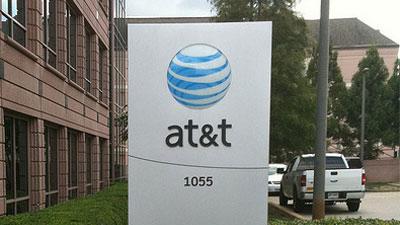AT&T Touts Record-Low Churn, Praises Tax Reform For Strong Q4 Results

AT&T said it ended 2017 with an exclamation point thanks to the passage of tax reform, network virtualization success, and record-low wireless churn rates during the final quarter of the year.
The Dallas-based carrier said it added a total of 4.1 million wireless customers during the fourth quarter. AT&T also said it saw its lowest-ever fourth-quarter subscriber cancellation rate, with a postpaid churn rate of 0.89 percent.
"There's no bigger driver of revenue than low customer churn," Randall Stephenson, AT&T's Chairman and CEO, said during the earnings call on Wednesday evening.
AT&T said that as of the end of the year, it had successfully virtualized 55 percent of its network. As the carrier strives to hit a goal of a 75 percent virtualized network by 2020, AT&T's network and IT costs will continue to decline, Stephenson said.
During its Q3 2017 earnings call in October, AT&T said it expected to close its proposed acquisition of media giant Time Warner by the end of 2017. The merger still hasn't closed due to pending regulatory approval, and Stephenson told investors that closing the deal would be a "top priority" in 2018.
While AT&T remains confident that it will eventually gain approval for the acquisition, Stephenson said that the company is open to finding "reasonable solutions" to address the government's concerns, the deal is slated to go to court on March 19.
For the fourth quarter, AT&T's Business Solutions revenues rose to $18.39 billion from $18.03 billion in Q4 2017. John Stephens, AT&T's senior executive vice president and CFO, said the growth in business services is thanks to and wireless equipment and strategic services -- Ethernet, cloud, and VoIP -- sales. Business wireless revenues rose year-over-year to $10.96 billion in the quarter, up from $10.33 billion a year ago.
Partner Solutions revenues dipped slightly during the final quarter of the year, which ended Dec. 31, from $1.52 billion in Q4 2016 down to $1.46 billion.
Stephens said that AT&T now has over 1.8 million business customer locations connected to fiber. "That means more sales opportunities," he said, noting that the company expects increasing business customer activity because of the passage of tax reform.
AT&T reported diluted earnings of $3.08 per share on revenues of $41.68 billion, compared to $0.39 per share and $41.84 billion in the year-ago quarter. AT&T's earnings beat Wall Street's revenue estimate of $41.19 billion.
Net income attributable to AT&T during the quarter was $19.04 billion, up from $2.44 billion during Q4 2016, which the carrier attributed to the impact of the new tax law that went into effect at the end of 2017.
Thanks to the passage of the Tax Cuts and Jobs Act, AT&T said it will be investing $1 billion into its business during 2018. So far, the carrier has paid out more than $200 million in bonuses to frontline employees during Q4 2017, as well as offering up $800 million in voluntary funding to employee medical plans, AT&T said.
For full-year 2017, AT&T's consolidated revenues totaled $160.5 billion versus $163.8 billion in 2016. The carrier said this decline was primarily due to legacy wireline services losing steam, as well as wireless service revenues, which were partially offset by growth in International and strategic business services. Net income for the year was $29.5 billion versus $13.0 billion during 2016, and like net income for quarter, AT&T attributed the substantial increase to savings due to tax reform.